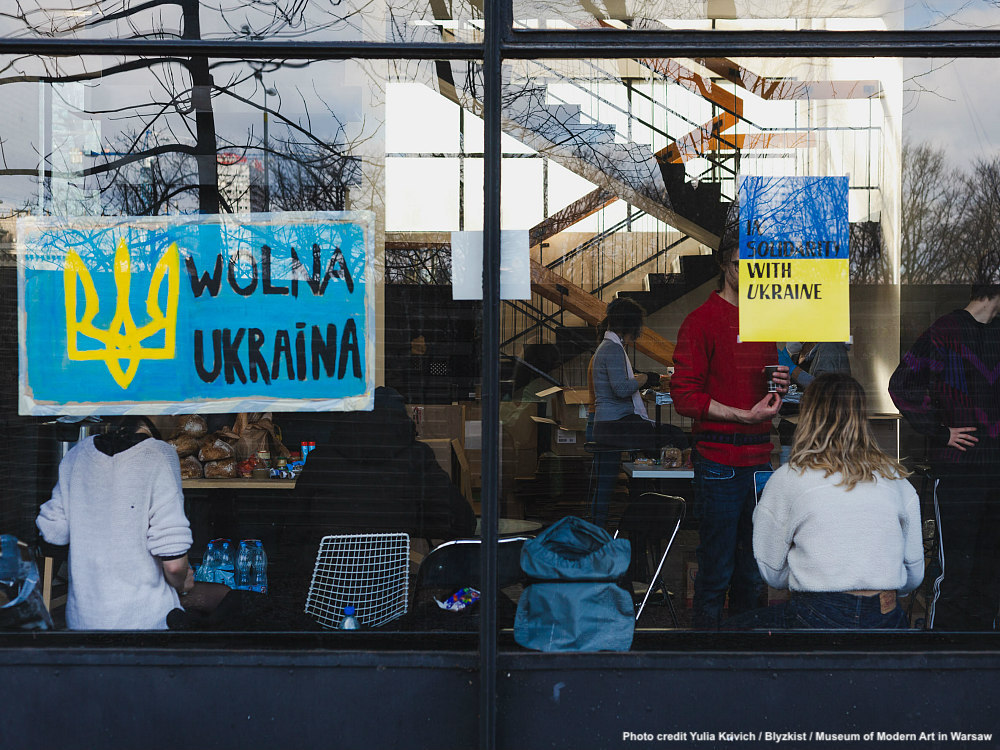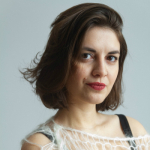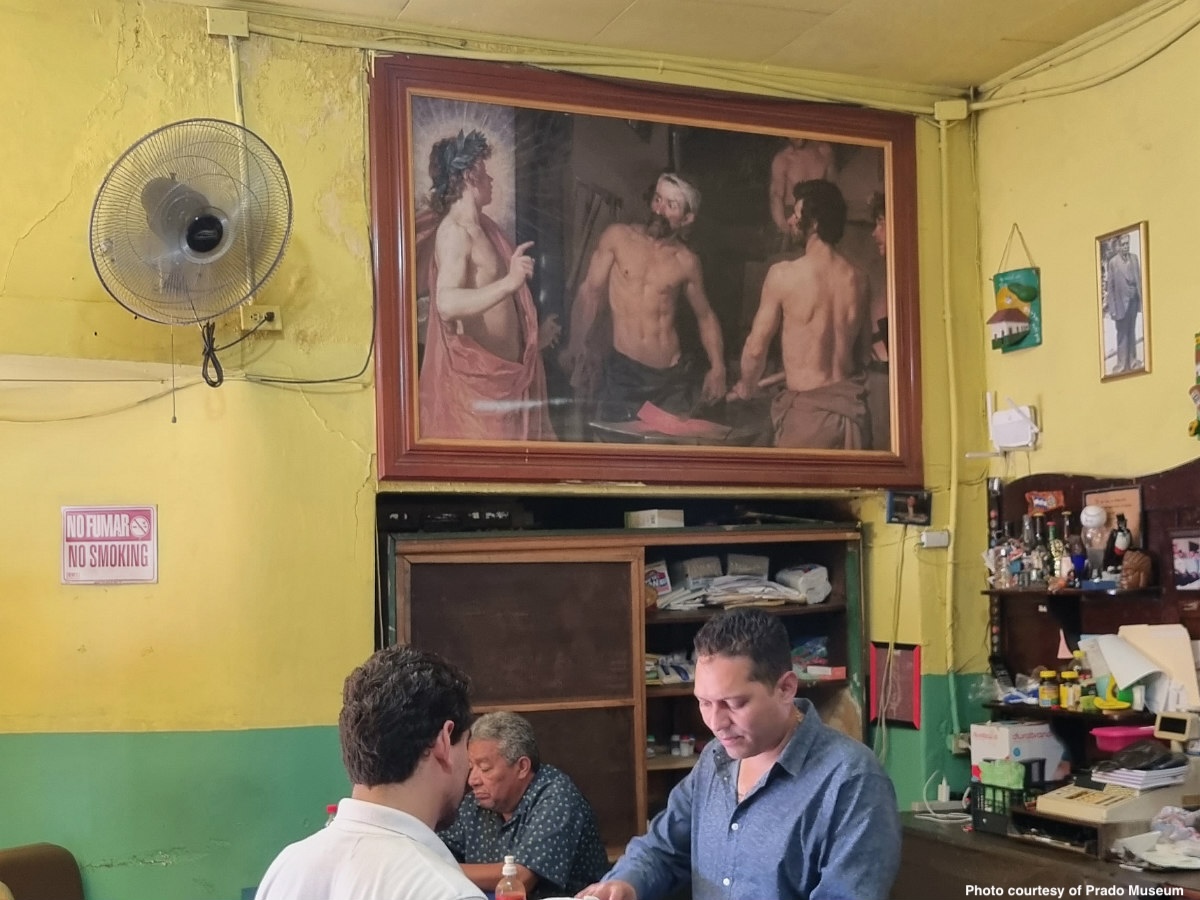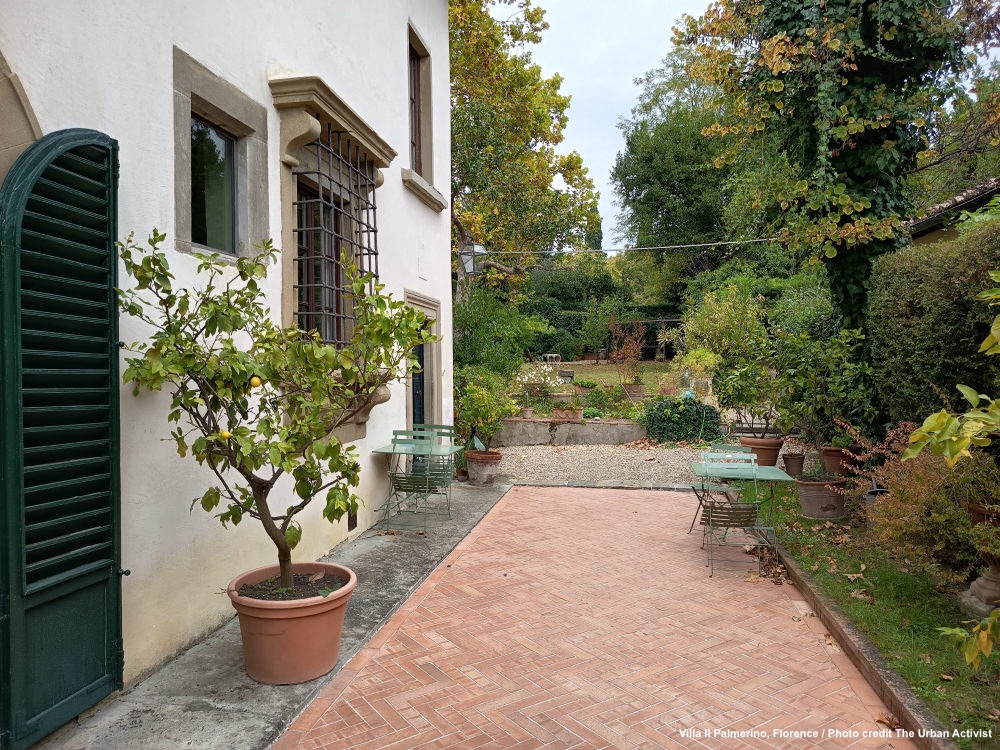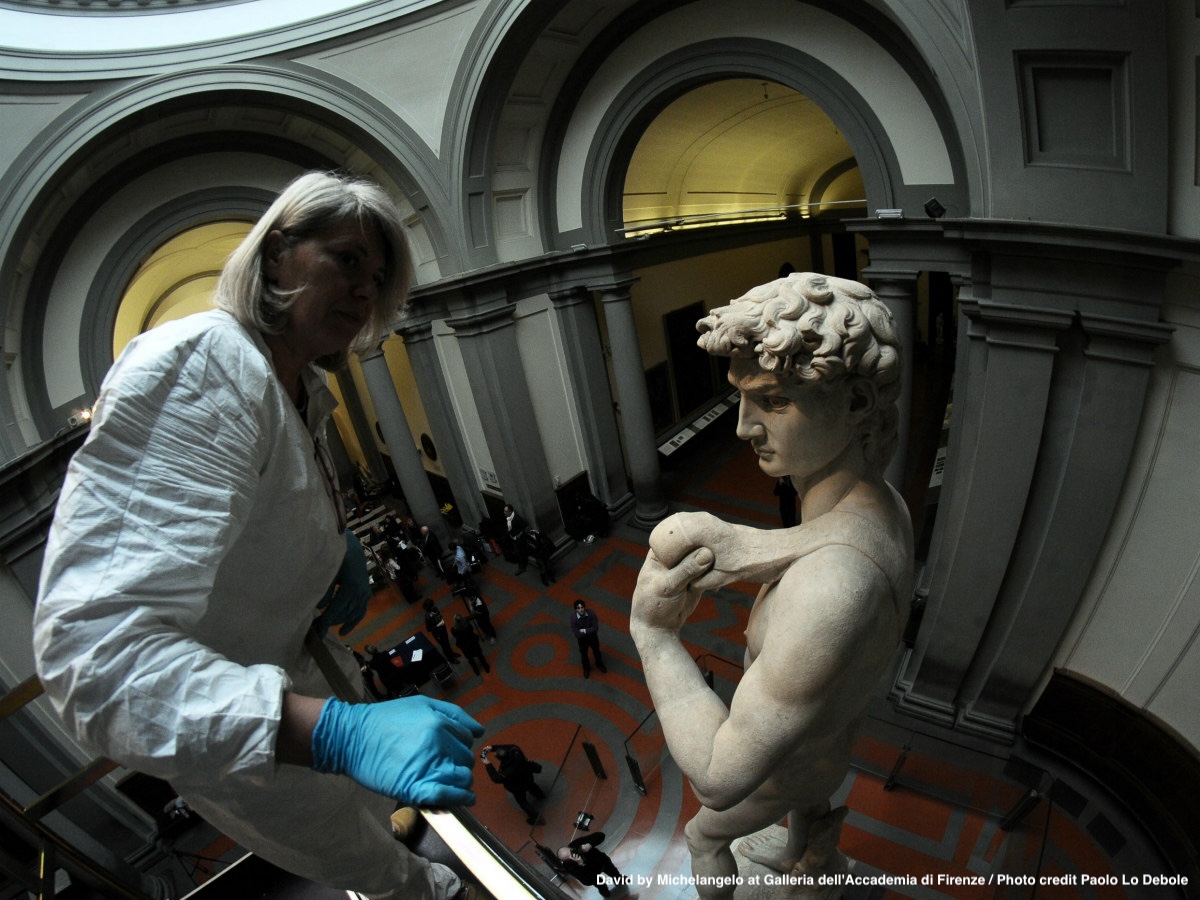A little over a week after the war reescalated in Ukraine, on March 5th, I’m still in an awful mental state but decided to attend the unscheduled event organised on Pańska Street, 3 in Warsaw. This is the address of the office building of the Museum of Modern Art in Warsaw (MSN — Muzeum Sztuki Nowoczesnej), which now looks much more like a war-volunteer-headquarter than a regular art institution.
This event or I’d better call it “emergency meeting”, brings together mostly Polish experts connected somehow with the local art scene or activists who are actively involved in the volunteer movement. There are also several Ukrainian art workers, me included, who just fled the warzone and who are still crying while listening to others or making the statements with a trembling voice. But there’s not much time for emotions: this event has a strict structure and agenda. After shortly discussing urgent questions all of us are divided into several working groups brainstorming possibilities of counter propaganda, how to help Ukrainian artists who stayed in Ukraine and how to resolve the educational gap left by the war for students in the cultural field. Overall, how Polish institutions can help and how art could be used as a counter propaganda tool.
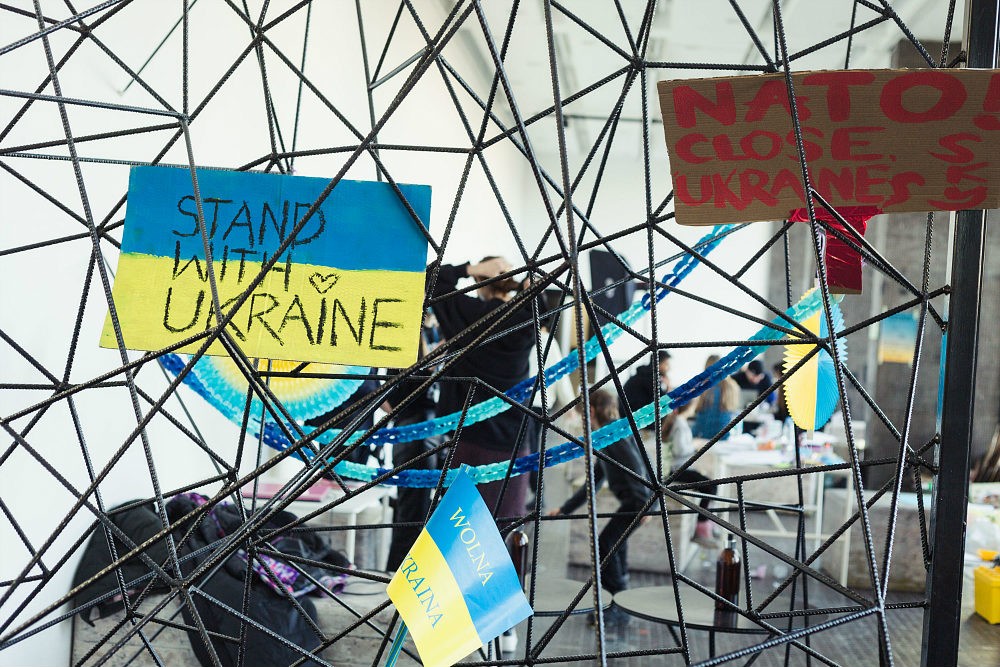
It feels like Poland doesn’t have time to stir up the drama in general. There’s no place for questioning, there are no possibilities for doubting and hesitating here. The main aim is to implement a direct self-organized action to help and to understand what strategies would work better.
An old lady enters a grocery store in Warsaw, and asks if she should wear a mask. The cashier replies: “Haven’t you heard? There’s no corona anymore, now it’s war.” And that’s true, now the Covid pandemic is not that much of a big deal.
Right now on Pańska Street, 3 at the Museum of Modern Art in Warsaw you, as a migrant or refugee, can come and receive support, eat, get medicine and toiletries, take a photo for a document to apply for asylum, attend Polish language lessons or even yoga and breathing classes. But you can also be helping hands-on, something of immense value because it intends to change the state of mind of the victims of the war in Ukraine into rather motivated helpers. All of this is organised by an emergency support initiative called The Sunflower Solidarity Community Center, which unites several artists and activists from Poland, Ukraine and Belarus, creates a space for discussion and amplifies the voices of Ukranians.
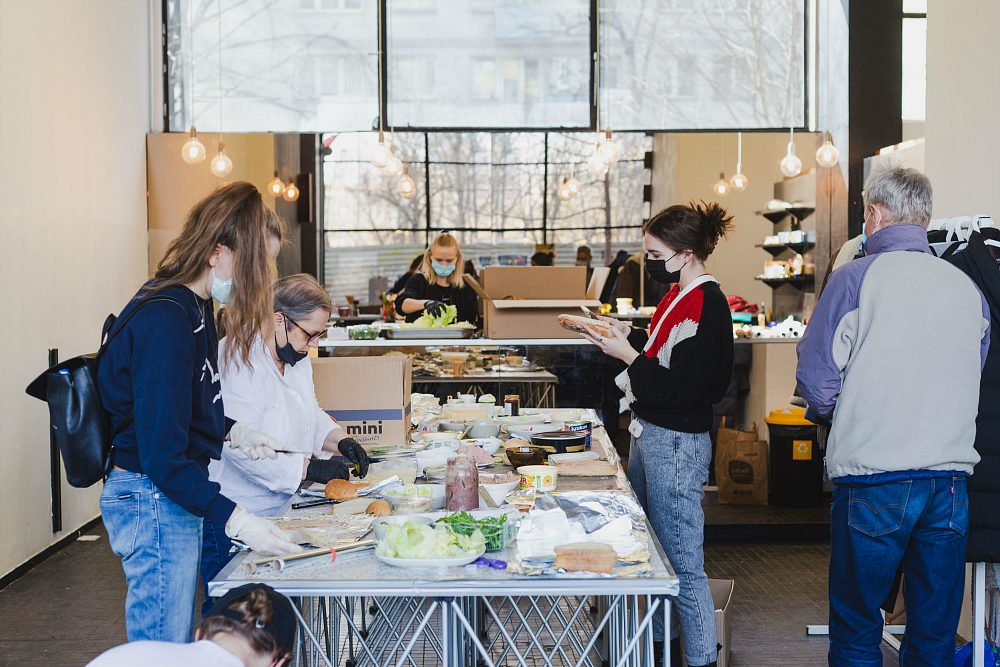
The whole supporting program is held by the Blyzkist initiative (“Blyzkist” in Ukrainian means “Closeness” or “Intimacy”), which is a unit of the whole museum activity. This initiative was called to life back in 2020 by two Ukrainian cultural workers and artists, who came to Warsaw to study and stayed there — Maria Beburia and Taras Gembik. Before the recent escalation of the war in Ukraine, Blyzkist was curating a public program: guided tours in Ukrainian and Russian, discussions, or even film screenings for homeless people to provide them with not only intellectual entertainment, but also literal warmth within the walls of the museum.
Honestly, Taras and I, we always imagined the Museum of Modern Art in Warsaw as a place like it looks today on Panska, 3. I mean, as a place that unites and that provides direct practical help. Because “Blyzkist” is about help, support, intimacy, unity, care and attention to each other, — says Maria Beburia, one of the organisers.
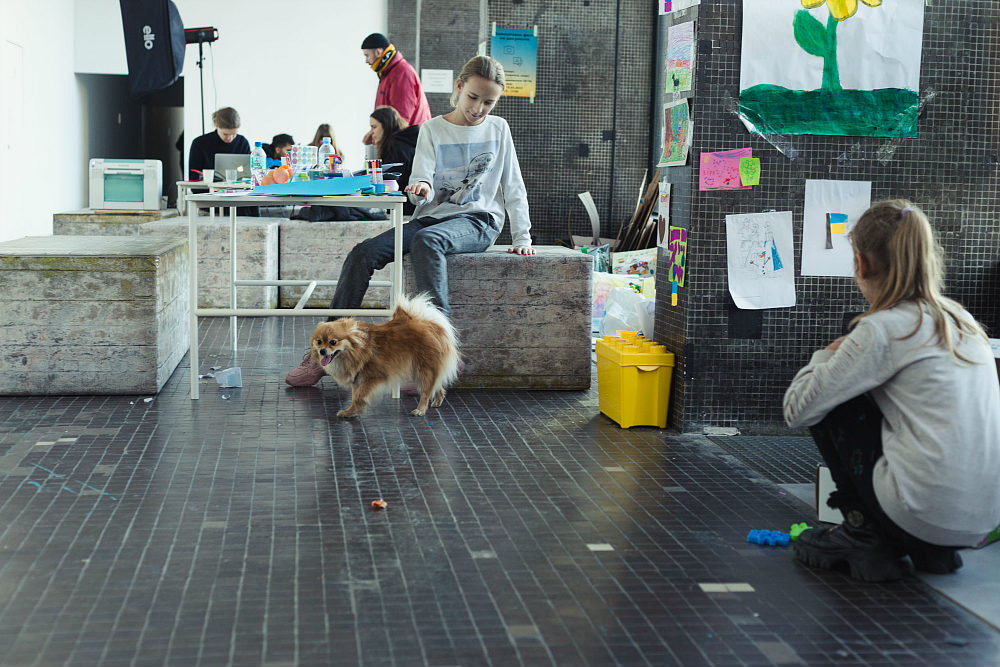
Right now the exhibition titled “Who Will Write the History of Tears” is on view inside of another building owned by the Museum. This show is “about the relations between the female body and repressive laws” and basically highlights the situation around the anti-abortion law which caused mass meetings in Warsaw two years ago. I am asking Sebastian Cichocki, the Chief Curator of the Museum, what the plan for the next exhibition is and if they’re changing the plan adapting to the current situation.
“No, actually the next exhibition will be accompanying an auction which supports Fundacja Ocalenie, an organisation helping refugees in Poland. We planned it a long time ago, actually we do it every year, but now it will be done on a much bigger scale. It feels well synchronised with the dark moment in the history we’re facing”, — answers Cichocki and emphasises later that the idea to create this exhibition was foremost caused by the catastrophic situation on the Belarus-Polish border that happened last year with thousands of Syrian and other Middle-Eastern and Northern-African refugees who couldn’t cross the Polish border and stayed in awful conditions there for months.
Now I am very curious why does this museum — setting it apart from other museums, which in general are quite unwieldy organisations — have such progressive views I am asking Cichocki what is the main mission of the museum as its program fits so perfectly well to current circumstances, and he replies:
We are in the process of re-writing the mission of the museum. It’s a very tricky question because everyone who works here has their own aims. I guess this kind of discourse about applying artistic tools to the other systems is something that we all kinda share. It’s not about imitating the world, it’s about shaping it. Even if you’re using classical media you can still shape the world. Even painting on a canvas is a very useful weapon.
I find this idea of shaping the world extremely beautiful in its sharpness, bravery and uncompromising view. It takes courage for a museum or cultural institution to commit to that idea and accept that much responsibility. Perhaps this is something that many of us in the art field come to realise now after courting for many years the desire for cultural institutions to stay “neutral”, when in fact as Laura Raicovich diagnoses in her work, this is almost impossible.
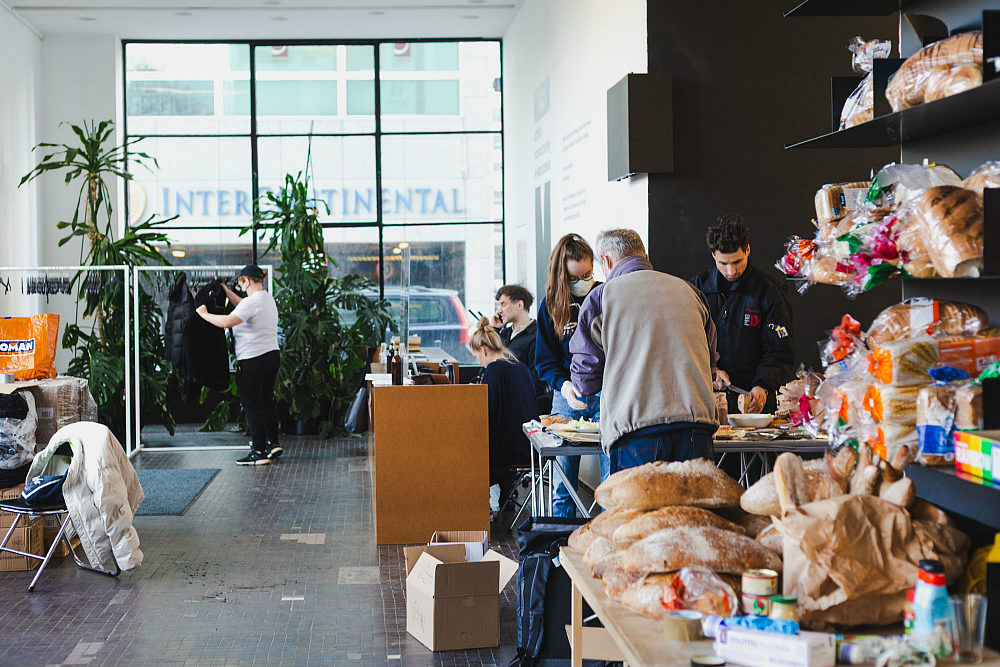
Right after Warsaw, I’m coming to Berlin and it seems like everything works differently here. My friend Vita sends me the pdf-invitation to some kind of event that aims at supporting Ukrainian cultural workers who fled their country. This meeting is happening in the Roter Salon of the Volksbühne — one of the most iconic cultural institutions in Berlin. There is a representative of the German government smiling on stage, the room is very chic, full of crystal chandeliers. The whole event is tense but still much more relaxed than the same kind of event would be in Warsaw and it looks like a high-class networking party. Everyone is wearing masks and, of course you cannot attend the meeting unless you’re three times vaccinated or have done a test. It’s still a pandemic going on in here, not a war.
Two days before that event in the Volksbühne, I visited an exhibition opening just across the street from the Volksbühne. One of the visitors, a friend of a friend, told me right after we’ve been introduced: “You should capitulate!”. I was in shock because I didn’t even ask him about his opinion but still tried to parry:
— “But then we’ll tolerate future wars caused by Russia”
— “This is a speculation, there might be no wars apart from this one in Ukraine”
— “Russia was involved in the conflict in Kazakhstan literally two months ago”
— “I didn’t know that. But still, you have to capitulate. The war is bad and I am a pacifist”
I was furious that evening but found out later that this is a quite common point of view and even the most progressive left-wing Germans are polarised into two camps right now amid the war in Ukraine: anti-war pacifists and those, who are sympathising with the Ukrainian defence. To my surprise, I have found that some European art institutions haven’t positioned themselves in this war yet and are still struggling with neutrality and I don’t think that there is even Russian money involved, I just feel that it takes ten steps of approval in the hierarchy of the museum to make a decision about at least something.
The Museum on Pańska, 3 reacted immediately. It seems like this institution either doesn’t have this hierarchical system or rather just functions in full synergy with its environment and civil society. Pacifism is a privilege. It’s just that Poles don’t have this privilege, unlike those who are far from the war zone.
